In the mid-20th century heavy tanks were a sign of membership in an elite club of tank building nations. Many nations attempted to make these tanks, but failed. Even if a heavy tanks was made, it did not always make it to the war, like the American Heavy Tank M6. Only four nations mass produced heavy tanks that made it to the battlefield: USSR, Germany, Great Britain, and Italy. While the British Churchill was officially an infantry tank, the Italian Carro Armato P 40 was only heavy on paper.
Enlarged Carro M
Italy was the fourth country that managed to build its own tank. Like the British and the Germans, Italy worked on a heavy tank first. The FIAT 2000 ended up a very good tank, but was burdened with typical problems for a heavy tank. It was well protected, but slow, and more importantly, expensive. As a result production was limited to two vehicles.
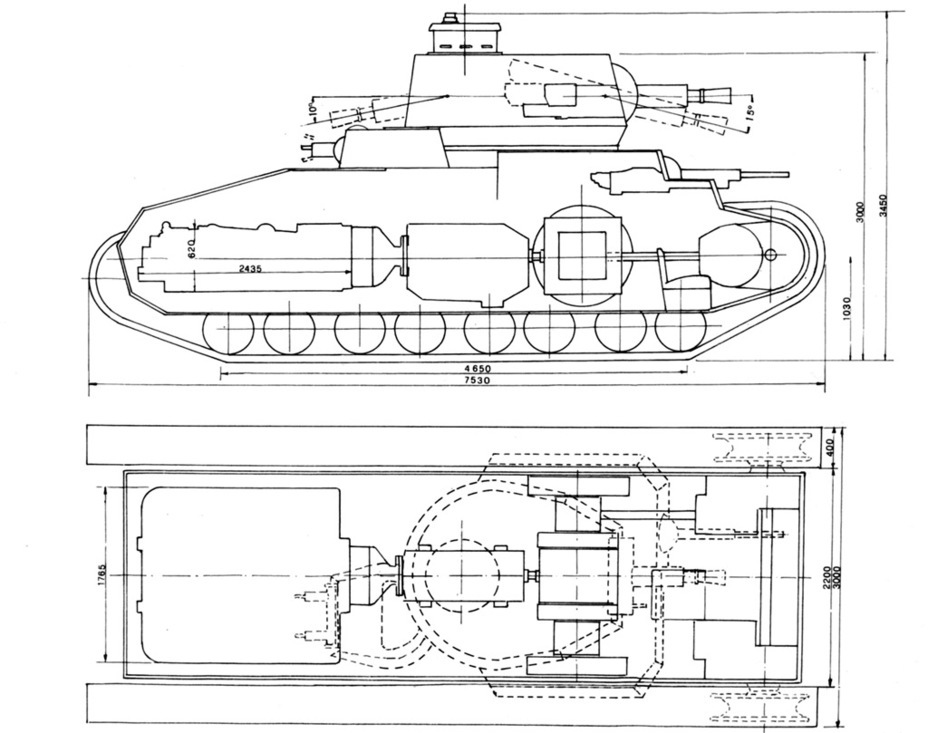
Production of smaller and cheaper tanks like the FIAT 3000 made more sense. Italy abandoned building heavy tanks for nearly two decades. However, they were not the only ones. After the failure with the Independent A1E1 the British stopped trying to make a breakthrough tank, and the French did not create a single true heavy tank in the interbellum period. Japanese heavy tanks were heavy in name only.
Only the USSR managed to begin T-35 production in this period, but there were many issues with this tank. The tank was suitable for parades more than service, and was only built in tiny batches. Meanwhile, the Red Army wanted an even heavier tank. The T-39 ended up way too heavy, and the cost of 3 million roubles scared them off building even one prototype. Incidentally, this tank had Italian roots. It was based on a 65 ton tank project designed for the USSR by the Ansaldo company.
The Italians returned to the idea of heavy tanks in the late 1930s. The development of a medium tank was a more important issue for the CSM (Centro Studi Motorizzazione, the organization responsible for development of new military vehicles). The development of a heavy tank trailed in priority. This can be seen in the first set of requirements for the Carro P (Pesante — heavy). According to the document, signed on December 1st 1938, the objective was to end up with a 20-25 ton tank armed with one 47 mm cannon and three machine guns. The crew would consist of 6-8 men, top speed would be 32 kph, the fuel capacity would be enough to drive for 10 hours. Design was directed towards not the creation of a new tank, but the Carro Armato M 13-40 with thicker armour.
Work was done entirely on paper for some time. However, the situation changed in 1939. The Germans showed their Nb.Fz. medium tank in 1939. The Nb.Fz. program was long over by that time, but the tanks were successfully used for propaganda purposes. Even Soviet documents of the time called the Nb.Fz. a heavy tank.
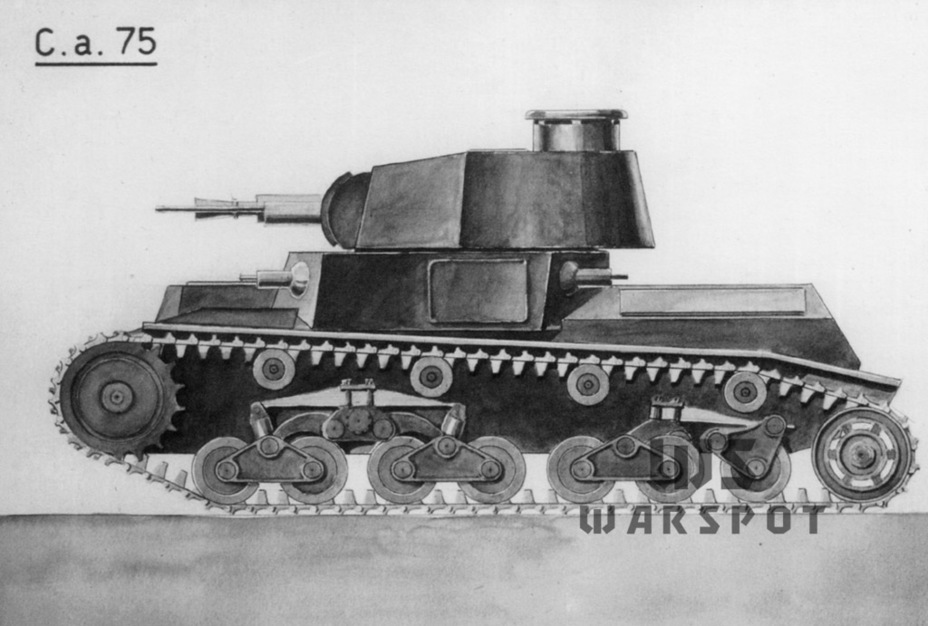
The appearance of the Nb.Fz. had an effect on the Carro P. Instead of a 47 mm cannon, a 75 mm howitzer was used. There was also talk of a heavier 90 mm gun. The Carro P started to resemble a mix of the Carro M and Nb.Fz. This is also fair to say about the CSM project dated June 25th, 1940. The 30 ton tank would have two turrets: in addition to the main turret with a 75 mm howitzer and a coaxial machine gun there would be a mini turret with two machine guns. A 20 mm Breda autocannon was also installed on the front of the hull. The thickness of the front of the tank was 40 mm, which allowed it to withstand 25-37 mm anti-tank guns at long and medium distances. The tank would have a 420 hp engine and a top speed of 32 kph.
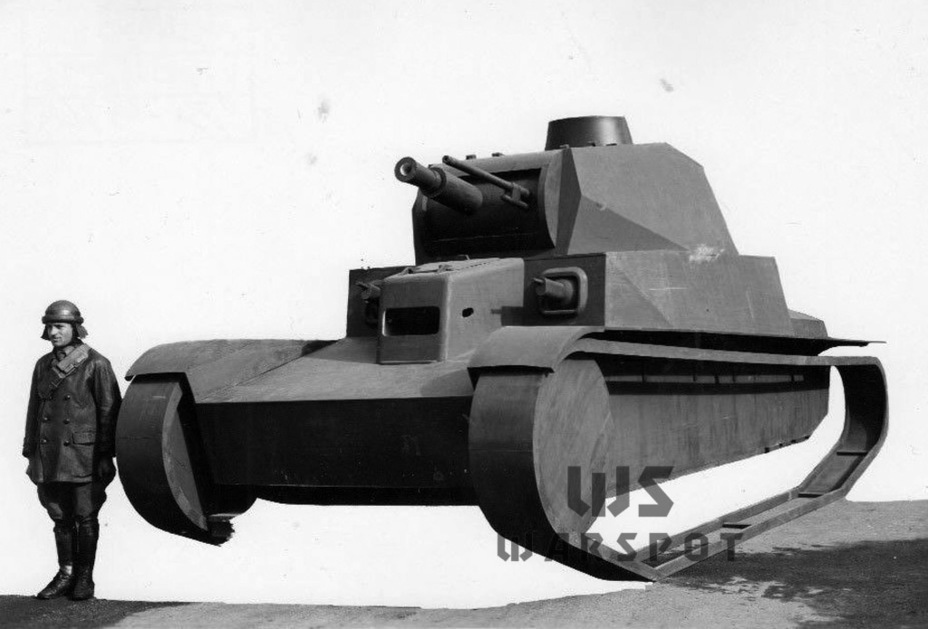
The Carro P 75 (heavy tank with a 75 mm gun) did not last long in this configuration. The Italian military did not consider the heavy tank as a sluggish heavily armoured tank that could serve as a battering ram. They wanted a heavy tank that could have the mobility of a medium tank, if possible accelerating to 40-50 kph. The composition of the armament was criticised, and the tank was deemed too large and heavy.
Ansaldo presented a reworked variant of the Carro P 75 on August 18th, 1940. The small turret was discarded, the mass dropped to 25 tons, the tank became shorter, and the amount of wheels was reduced to 7 per side. The 20 mm autocannon was moved to the turret and the machine guns were spread out along the perimeter of the turret platform. The crew was reduced to 5 men. The driver was shifted to the middle so he would not get in the way of the machine gunners.
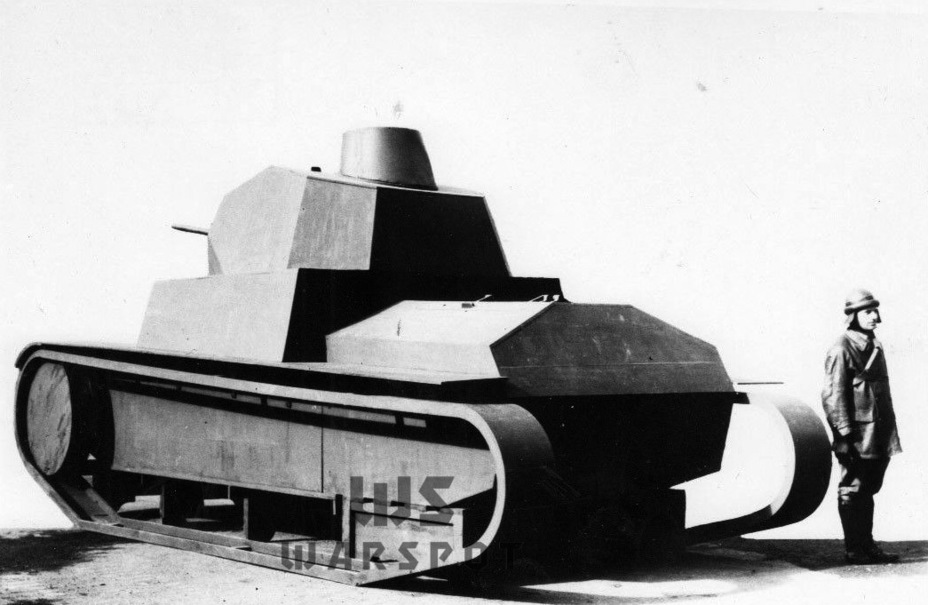
This variant was better accepted. However, this did little to move up the construction of a prototype. Italy entered WWII and it became clear that its tanks needed thicker armour. A new set of requirements turned up in December of 1940. The new Carro P 75 would weigh 23-25 tons and have a 330 hp engine. The top speed was 35-40 kph, higher than the Carro Armato M 13-40. The thickness of the front armour increased to 50 mm, the sides to 40 mm. The tank was protected from the 2-pounder gun, the main weapon of British tanks. The main armament was the same. The amount of machine guns in the hull was reduced to two. The new requirements called for a coaxial machine gun, but the model still had a 20 mm autocannon.
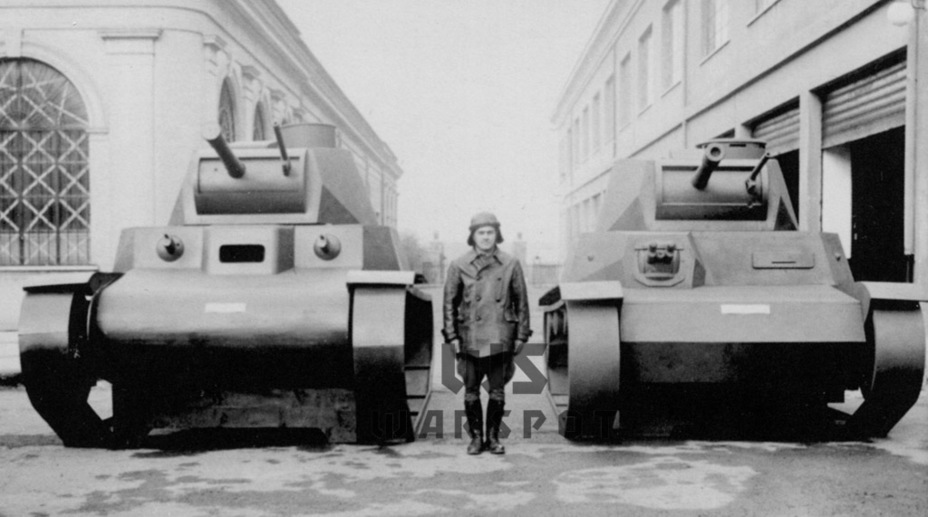
The powerplant was the greatest problem. As a result of this, Ansaldo developed two variants of the Carro P 75. The first was similar to the project of August 1940. As before, the driver sat in the middle of the turret platform in a cabin flanked by two Breda 38 machine guns. The Carro Armato M 13-40 had a big influence on this design. The hull and turret were similar. This variant went as far as a full scale model built in mid-1941.
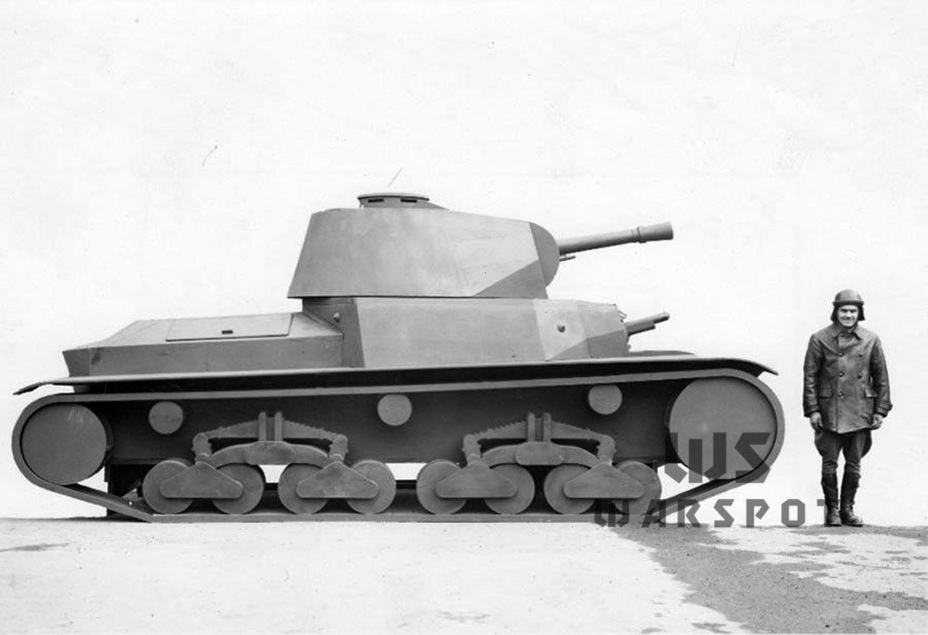
The first draft of a new variant was prepared in October of 1940. It was even more similar to the Carro Armato M 13-40. The mass of this tank would be 23 tons. It would be driven by a 330 hp SPA Tipo 432. The Italians also seriously considered the German Maybach HL 120 as an alternative. The crew was reduced to four, with only one hull gunner. The number of machine guns did not change, but they were grouped into a dual mount like on the Carro Armato M 13-40. The tank itself resembled the M 13-40. The full sized model also had a 20 mm Breda 35 autocannon, which was not present on the May 1941 requirements.
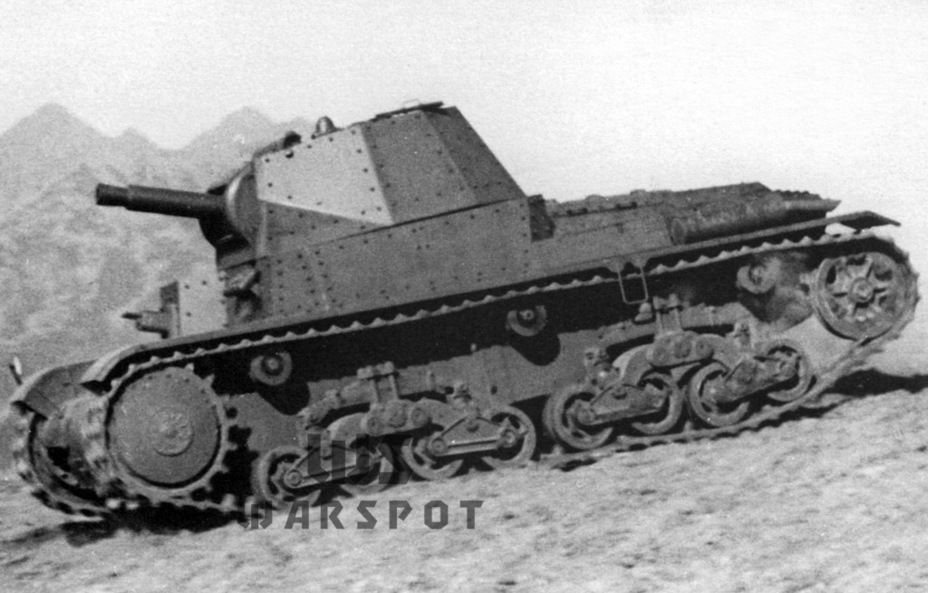
The CSM examined the models and picked the second variant. In the summer of 1941 the tank's name was changed to Carro Armato P 40. A decision was finally made to build a prototype. The firepower of the tank began to increase in the summer of 1941. A 75 mm howitzer would not be enough to fight the Matilda tank. Requirements for a new 32-caliber gun were prepared. Theoretically, it could combat British heavy tanks at close ranges. The mass of the Carro Armato P 40 was increased to 24 tons. This was a strange mass for a heavy tank, but the Italians had their own ideas. They were not alone: the Swedish Strv m/42 was even lighter, but still classified as a heavy tank.
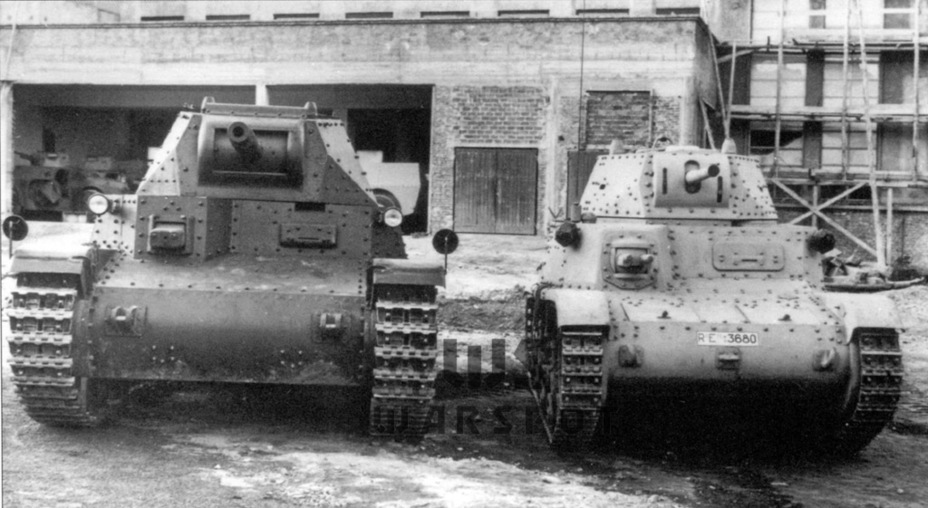
The experimental Carro Armato P 40 entered trials in early December 1941. For a medium tank, and not a heavy, it was not all that bad. The armour was enough to protect from low caliber artillery and the 75 mm howitzer was enough to combat most British tanks and light fortifications.
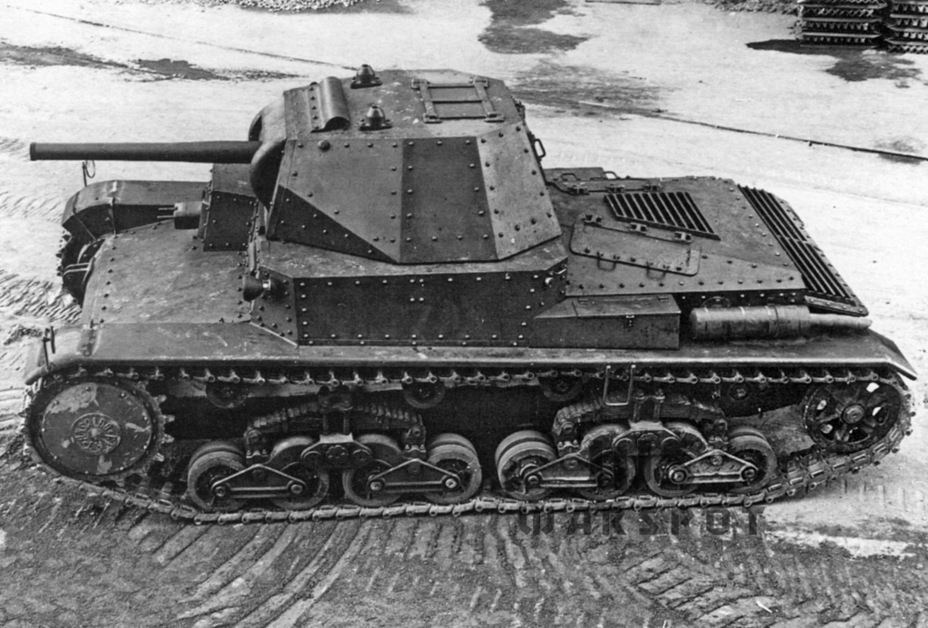
On December 12th, 1941, the tank received a 32-caliber gun, thanks to which its firepower increased. The characteristics of this gun were close to those of the Soviet F-32 or American M2, and the penetration was even higher. However, the Italians grew concerned about their heavy tank. The cause of this was reports from the Eastern Front.
Soviet influence in Italian tank design
The effect of Italian defense industry on Soviet designs is infrequently considered. In addition to the heavy Ansaldo tank and purchase of three FIAT 3000 tanks by the USSR, the 100 mm Ansaldo naval gun also left its mark. The B-24 100 mm naval gun was designed based on this weapon, and then the improved B-34. In turn, the BS-3 towed field gun was based on this tank, as well as the D-10 family: the D-10S gun on the SU-100 tank destroyer and D-10T on the T-54/55. These guns and tanks are still used to this day.
The reverse happened with the Carro Armato P 40. Soviet designs had an influence on the Italians.
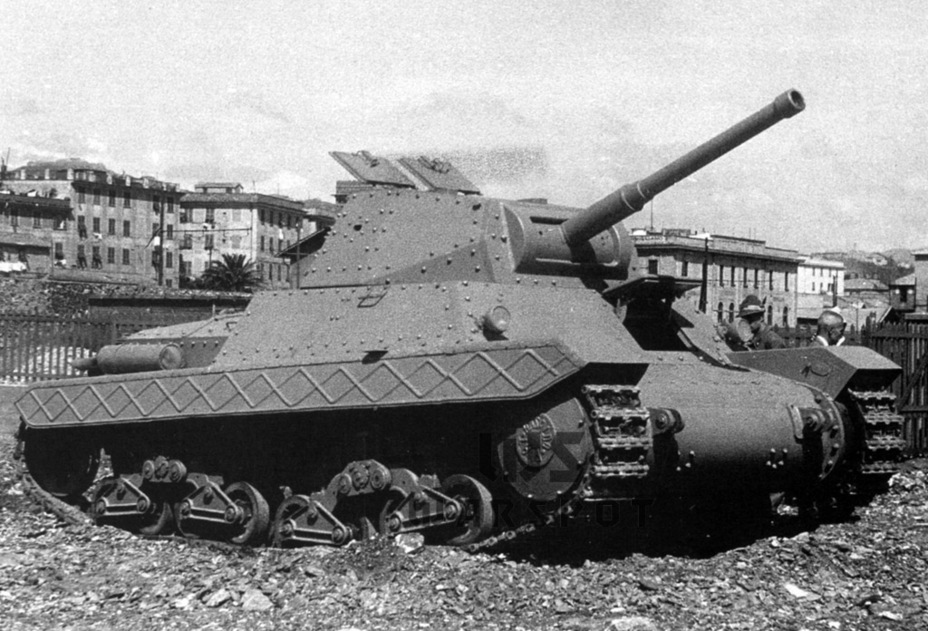
Among other trophies on the Eastern Front, the Germans captured T-34 tanks. A tank with an L-11 gun was present on the Kummersdorf proving grounds. Italy managed to get this tank loaned to them and put it through trials at the proving grounds near Nettuno in 1942. The Carro Armato P 40 was seriously altered even before that.
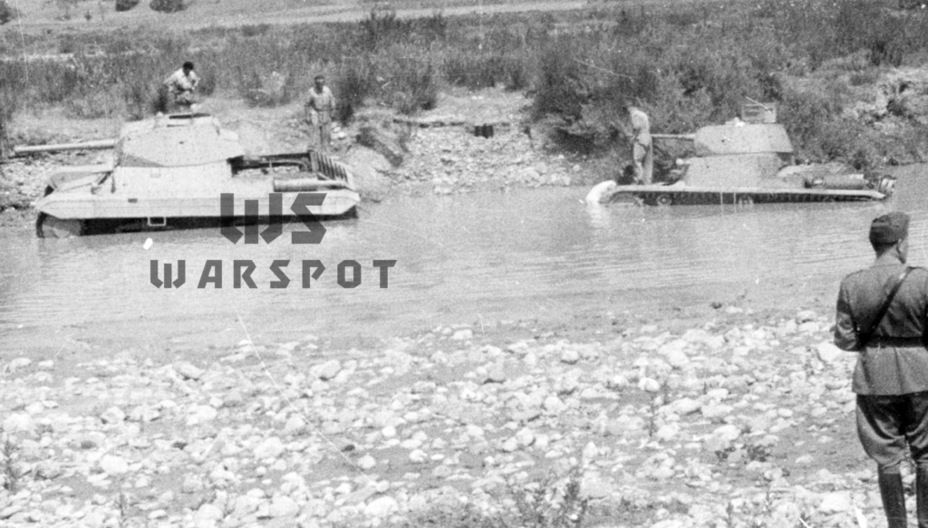
The chassis was not radically altered, as this would have slowed down development further. The hull, however, was changed significantly. The front and turret platform became sloped. The armour thickness did not change. However, the front plate was not monolithic: the P 40's transmission was in the front and hatches were needed to service it. The stepped layout of the front plate was similar to the German Jagdpanzer IV. The hull machine guns were removed, as they weakened the armour. However, the driver received a large hatch. The turret was reworked: it became much smaller, a toolbox was added to the rear, the number of hatches increased to two. Another addition was a new gun: the Carro Armato P 40 received a 75 mm L/34 cannon.
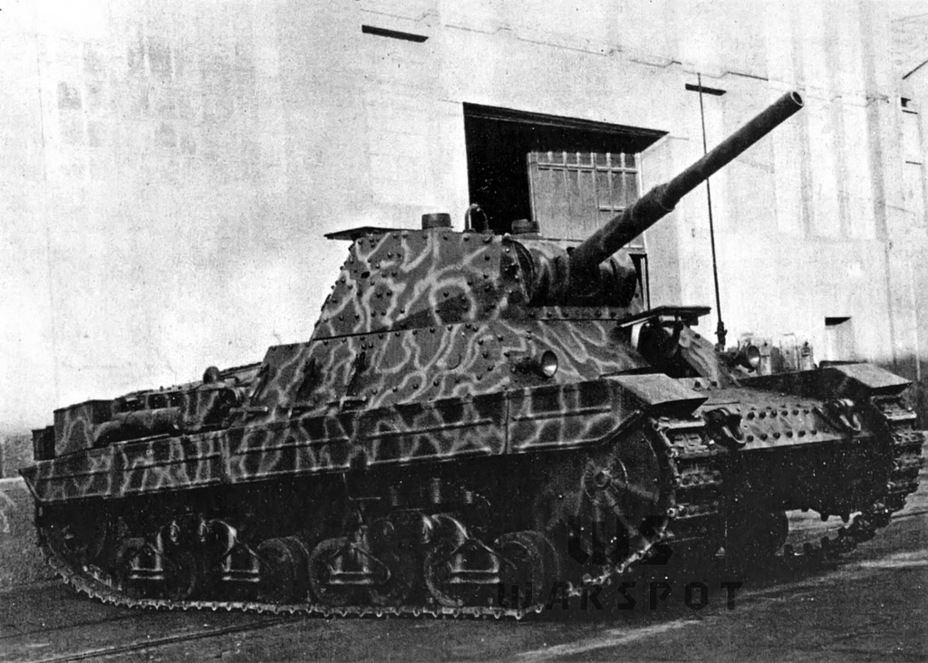
The second prototype of the Carro Armato P 40, weighing 25 tons, entered trials in July of 1942. Thanks to the 24 L SPA Tipo 342, its top speed remained at a reasonable 40 kph. One drawback was that the hull and turret were assembled using rivets, but there was one excuse: British tanks, the main enemies of Italian tanks, were built using the same bolts and rivets into 1944.
Overall, the Italian tank came out quite fine, even if it was a year late. Its characteristics were mostly no worse than those of the Crusader III, the British tank only surpassed it in armament and top speed. However, these tanks would never meet on the battlefield. Most British tanks were taken off the front lines and replaced with the American Medium Tank M4 or Sherman. The Italian tank could still compete with the Sherman, especially if one treats it as a medium tank and not a heavy.
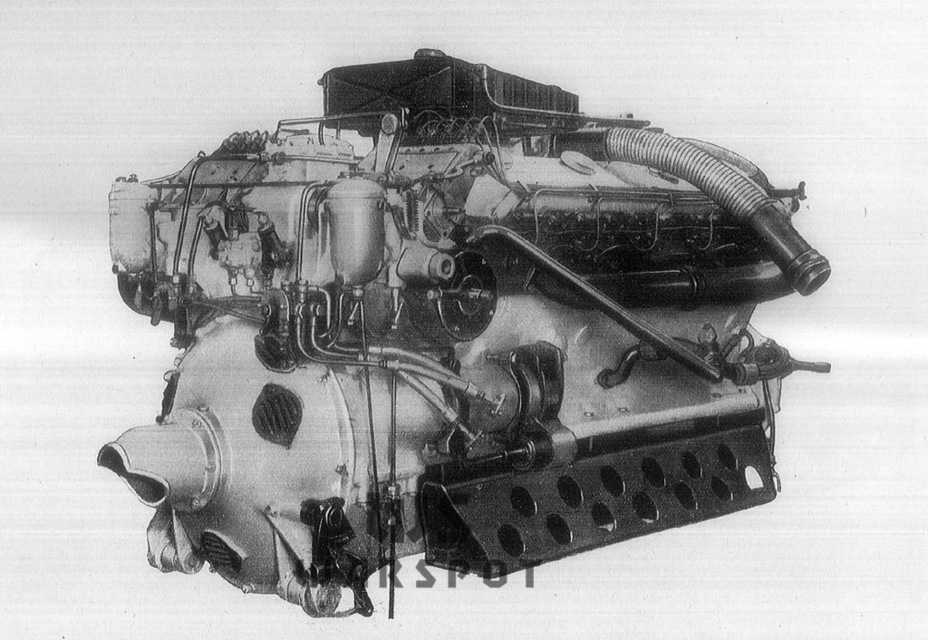
The tank was accepted into service on November 25th, 1942. It is often called Carro Armato P 26-40, but whether or not this index was used officially is a big question. It is called P 40 in nearly all documents, but it's possible that some materials in 1942 might refer to it otherwise.
The production tank weighed 26 tons. The design was altered once more during preparation for production. The rear of the hull and engine deck changed, and instead of two small hatches on the roof there was one big one that opened backwards. Thanks to a complex mechanism there were no issues with opening it like on the T-34. A toolbox and spare road wheel holder were added to the back of the turret. Like on the T-34, the turret housed two crewmen. The commander was distracted from his primary duties, which was a drawback.
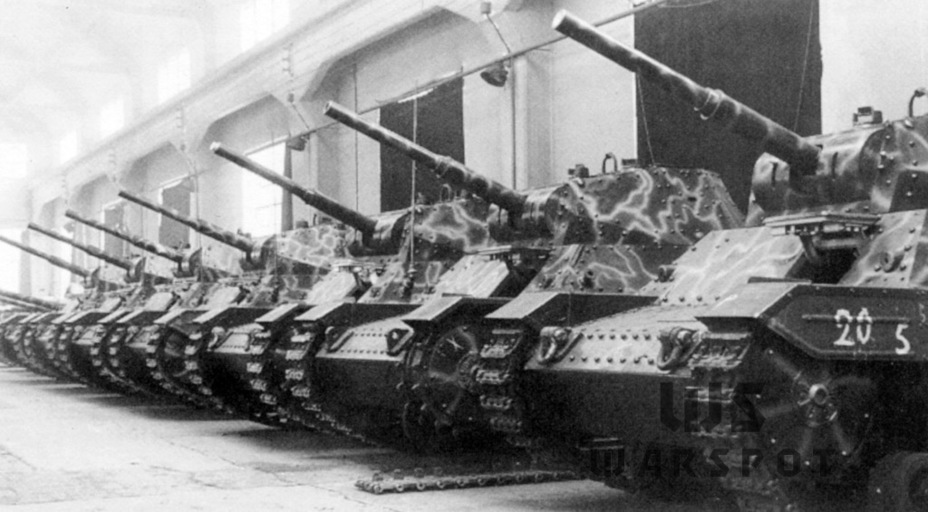
The first order for heavy tanks included 125 units. However, Ansaldo was overloaded with production of the M 43 medium tank and SPGs on its chassis. Engine production was another bottleneck. As a result, production of the P 40 was very slow. Only three tanks were built by August 1st, 1943. By the time the Germans confiscated all armament from the Italians, only five tanks were completed. This could have been the end, but the Germans had other plans. The studied the P 40 and came to the conclusion that it was an adequate tank, about equivalent to the early PzIV Ausf.G with 50 mm of front armour. The tank was adopted into German service under the index Pz.Kpfw.P40(i).
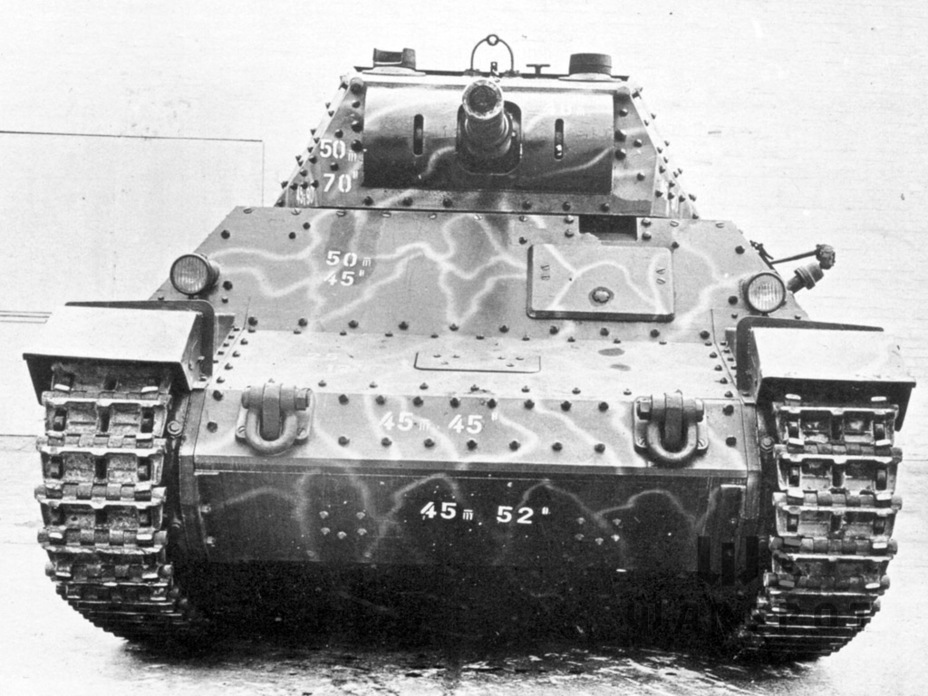
Production plans for the Pz.Kpfw.P40(i) were approved on November 9th, 1943. The tanks would be produced in two variants: with an engine and without. The engine-less tanks were destined for installation in fortification lines. This was caused by the fact that the factories had hulls in stock, but not engines. 75 of each type would be built. In practice, 38 tanks without an engine were built in 1944 and 61 fully fledged tanks. Depending on the source, 104 or 105 tanks of this type were built in total. The numbers vary due to the number of vehicles built before September 9th, 1943.
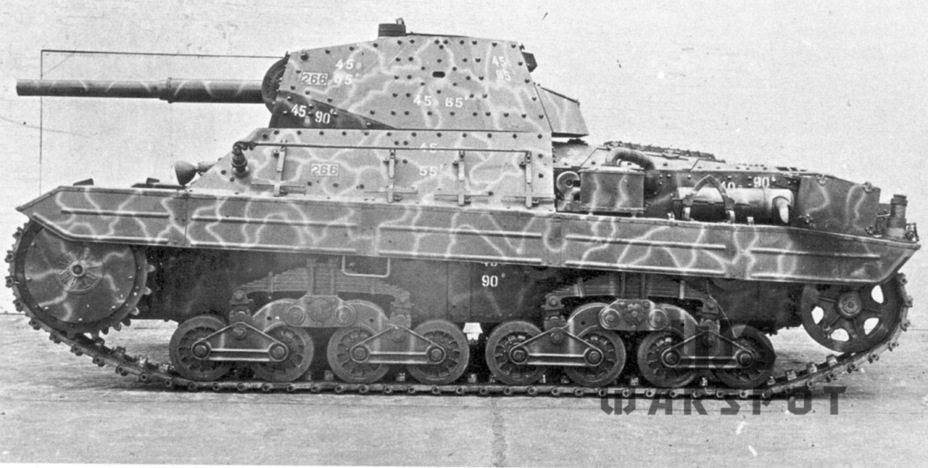
The main service unit for these tanks were SS police companies. In total HSSPF Italien received 42 of these tanks, two of which were written off immediately. The remaining ones were split between the 10th and 15th police tank companies operating in Italy. As of April 9th, 1945, the 10th company still had 15 tanks of this type and the 15th company still had 13.
The other vehicles were distributed in penny packets across other units. One tank was sent to Kummersdorf and was later used to equip an improvised armoured train. All other Pz.Kpfw.P40(i) tanks remained in Italy.
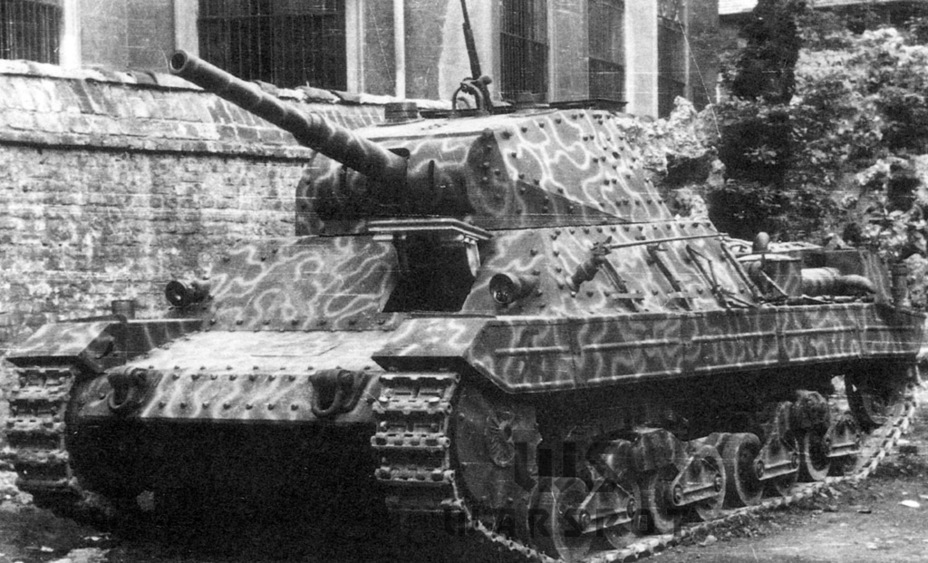
In addition to the aforementioned engine-less tanks, there was another variant used in fortifications. It was called F.Pz.DT 4814. This was the turret of the tank, purpose built to carry the German 75 mm KwK L/24 gun. 100 turrets were ordered at Ansaldo for use in F.Pz.DT 4814 fortifications. In reality, only one was made. It was tested at a proving grounds and remained there.
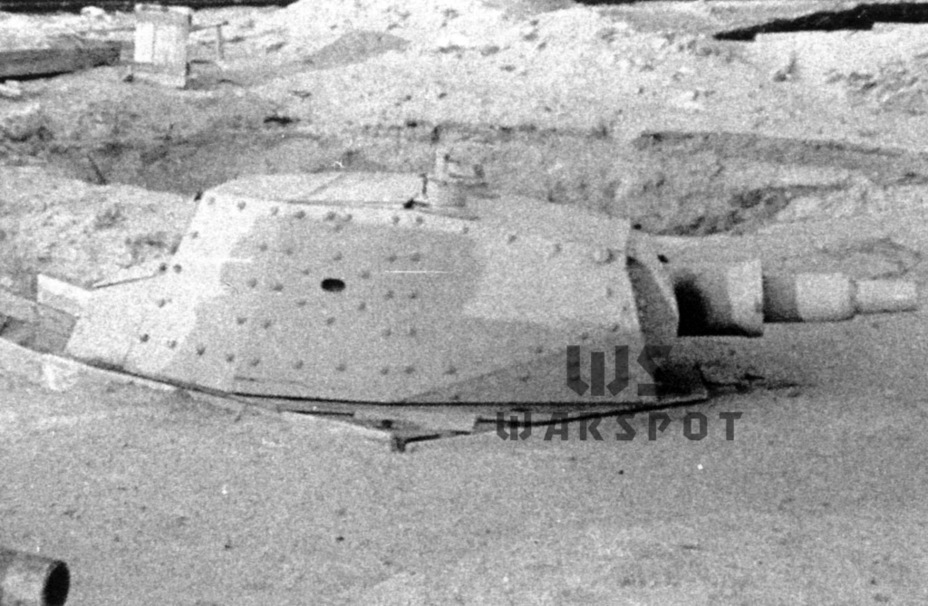
Italian heavy tanks did not have a post-war career. Only two of them survive to this day. Both are displayed in museums on army bases, which complicates access to them. Even though the Carro Armato P 40 did not fight in the Italian army, it's hard to call it bad. Unlike Italian medium tank, which were obsolete in 1942, the Carro Armato P 40 was adequate for its time. In addition, the tank had reserves for modernization.
Prospective Italians
The Carro Armato P 40 was the heaviest produced Italian tank of the war, but not the heaviest planned. Tanks that were planned, but remained as models, deserve a separate discussion. Even though they were never built they show the course that Italian tank building would have taken.
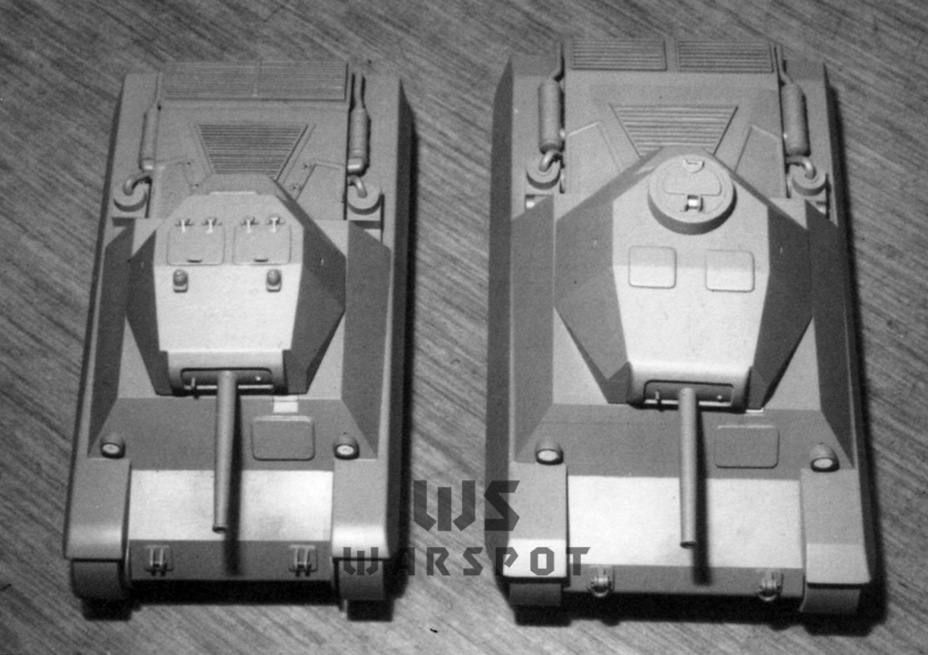
Even when the Carro Armato P 40 was accepted into service, it was known that it would become obsolete eventually. Work on an improved version, named Carro Armato P 43, began in late 1942. This tank can be considered a P 40 with the bugs ironed out. While the dimensions of the tank were about the same, it was much more modern. The turret fit three crewmen, so the commander could focus on his work. This was made possible by a larger turret. Like with the PzIII and PzIV, the commander was placed behind the gun and equipped with a cupola. The gunner and loader received their own hatches in the roof.
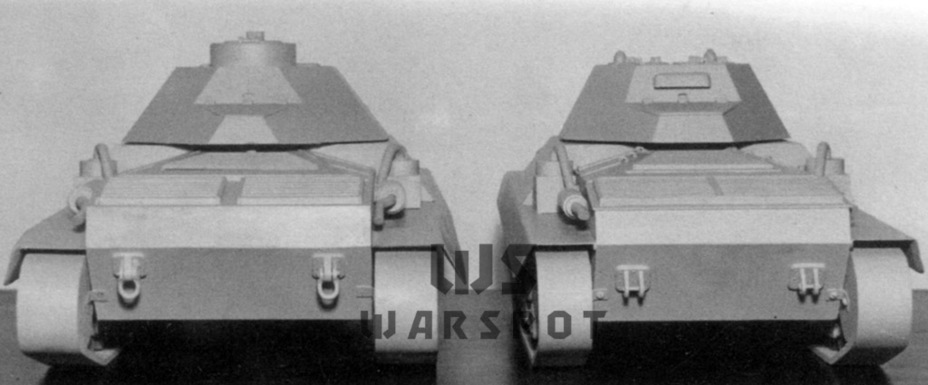
The armament was the same, a 75 mm L/34 gun, but a variant with a 105 mm L/25 gun was considered. This gun had a more powerful HE shell and a HEAT shell that could penetrate 100 mm of armour. The protection was more impressive: the front was 80 mm thick and the sides were 50 mm.
The mass did not grow much, only to 30 tons. This did threaten the mobility of the tank. To solve this, the SPA Tipo 242 engine was developed based on the Tipo 342 diesel. It put out 430 hp, which should have improved the mobility. The estimated top speed of the tank was 40-42 kph, but with the power to weight ratio of 14.3 hp/ton the final result could have been even higher. The only limit was the suspension. Yes, it was reinforced, but the design dated back to the Vickers Mk.E and had its limits.
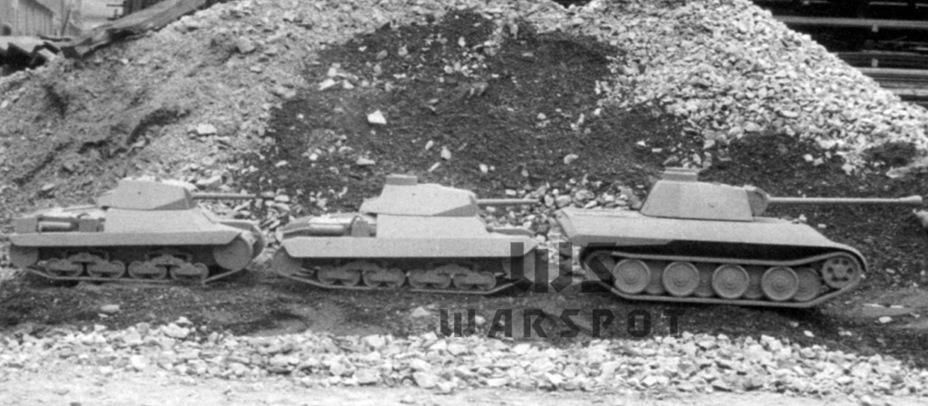
Work on the Carro Armato P 43 reached the model stage. At the same time, Italy considered production of the Panther tank. However, this tank would have been too complicated for Italian industry, and it would have to be adapted for its capacity. It is possible that the 700 hp Tipo 344 diesel engine was being designed to power this tank
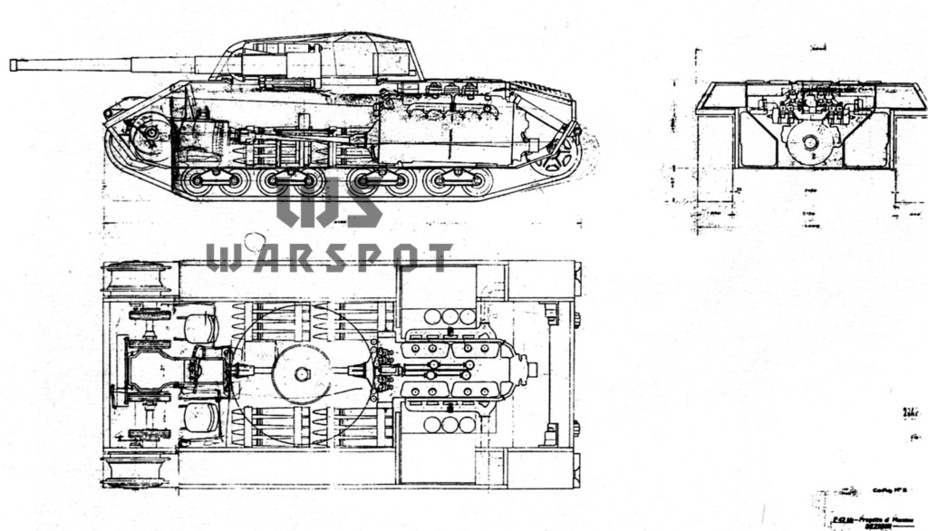
The further development of the Carro Armato P 43 was done under the index P 43 bis. Design documentation is dated April 1943. Despite the similar index, this was a in many ways a new tank, much more advanced. It had the same level of protection, but more modern design of the hull and turret. The stepped front plate made way for a monolithic plate at a sharp angle. It was somewhat weakened by an observation port, but the protection was approaching that of the Panther, and only at a mass of 34 tons!
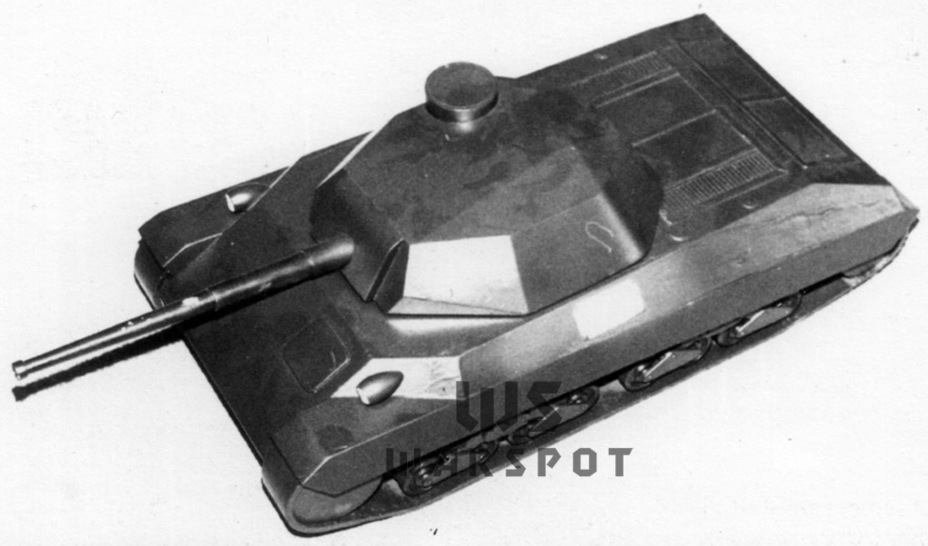
The turret was developed nearly from scratch, since it was supposed to have a much heavier 90 mm L/44 gun. It was based on the 90 mm AA gun. The ballistics were similar to that of the Tiger's gun, which made it a dangerous weapon. The turret was wide and low. The overall height of the tank was 2367 mm, which made it lower than the P 40.
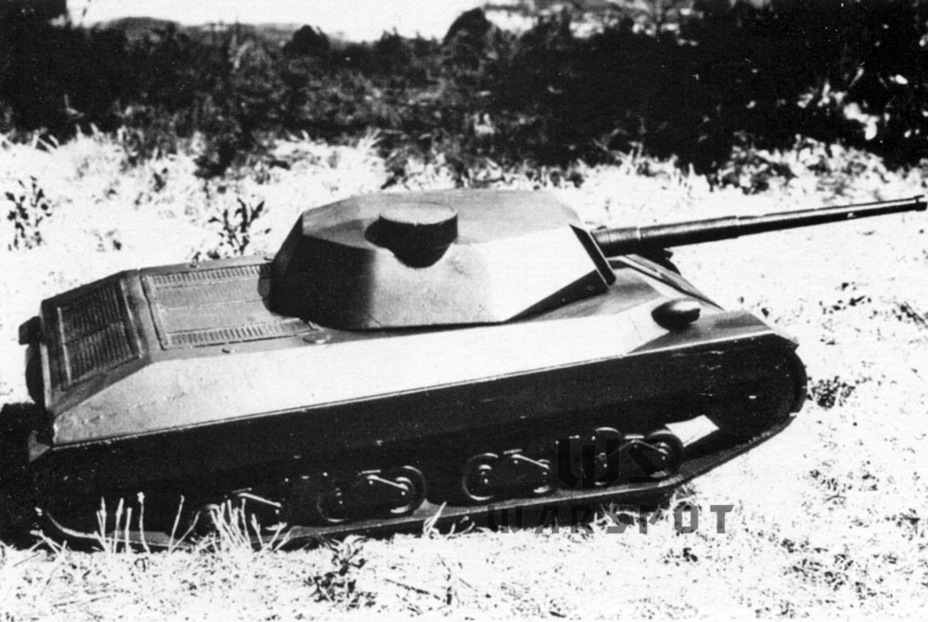
As with the P 43, work on the P 43 bis reached the stage where a 1:10 scale model was built. Designs for further development were also prepared. The armament would have been improved to a 90 mm L/53 gun, the armour would have been improved, and the suspension upgraded. Since the capabilities of the Vickers Mk.E suspension were expended, reinforcing it and widening the tracks no longer helped. A torsion bar suspension like the Carro Celero Sahariano could have been used, but this information is not confirmed.
In any case, the P 43 bis project shows that Italian tank building was far from hopeless. A very adequate tank was designed on paper. The biggest problem was the by the time the P 43 program was launched Italy's participation in the war was already coming to an end.
Translated by Peter Samsonov. Read more interesting tank articles on his blog Tank Archives.
Sources:
- Gli autoveicoli da combattimento dell'Esercito Italiano P.2 (1940-45), Nicola Pignato, Filippo Cappellano, SME, 2002, ISBN 88-87940-29-0;
- P.40 il mito del più potente carro armato italiano della seconda guerra mondiale, Nicola Pignato, Storia Militare, 2009, ISBN 88-87372-76-2;
- Author's photo archive.




